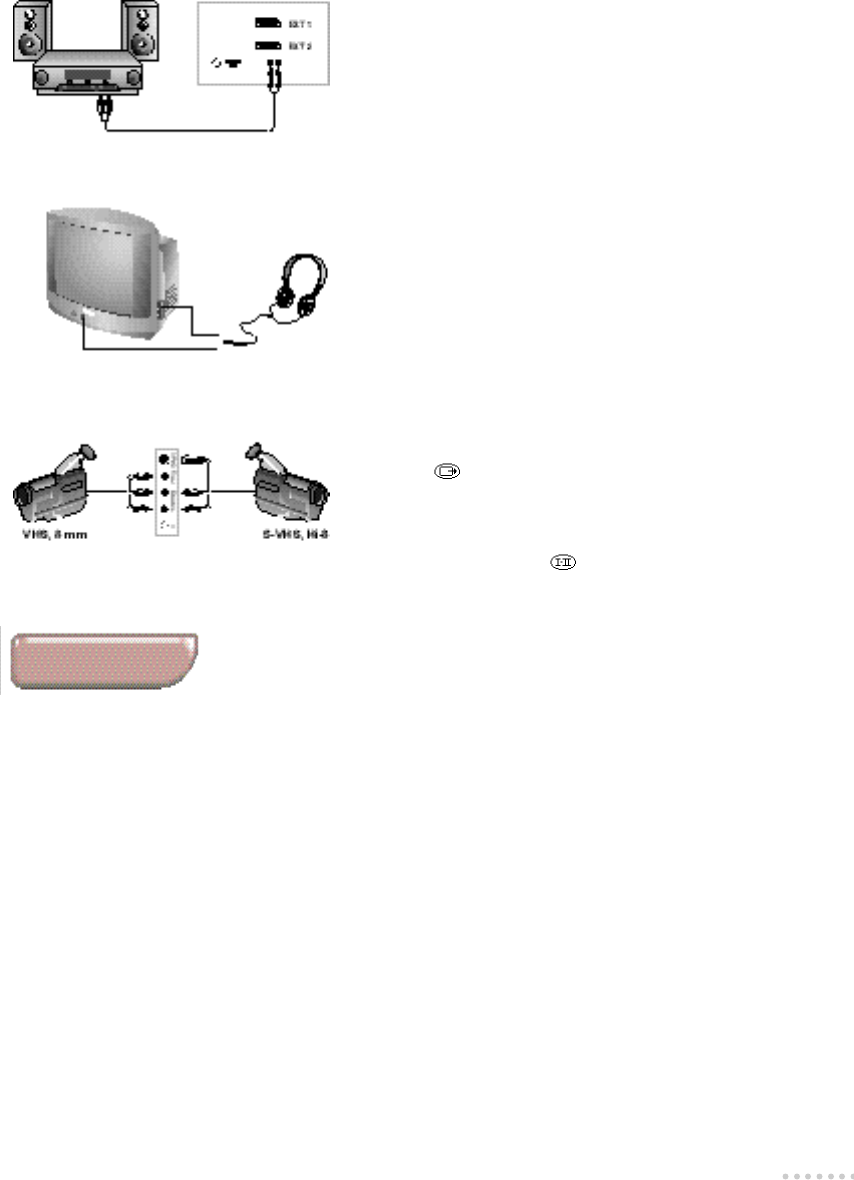
(only available on certain models)
Depending on the type of camcorder, carry out one of
the following connections.
Using the key, select EXT3 for a VHS or 8mm
camcorder and S-VHS3 for an S-VHS or Hi-8
camcorder.
For a mono sound camcorder, connect the sound signal to
the AUDIO L. input. Use the key to reproduce the sound
on the left and right loudspeakers of the television.
11
Depending on the model, the headphones socket is
situated on the front panel or on the right-hand side of
the TV set.
To adjust headphone volume, use the HEADPHONE
setting in the SOUND menu (p. 7).
The headphone must have an impedance in the range 32 to
600 ohms.
Amplifier
Headphones
Side connections
Glossary
To connect to a hi-fi system,use an audio connection cable
and connect the “ L” and “R” outputs on the TV set to the
“ AUDIO IN” “ L” and “R” input on your hi-fi amplifier.
N.B.: sound output corresponds either to the sound from the
television tuner or to the sound from the equipment
connected to EXT1 or EXT3, but never to the sound from
the equipment connected to EXT2. If you have a VCR,
connect it to EXT1 in order to benefit from the sound output.
RGB Signals: These are 3 Red,Green and Blue video signals which directly drive the red,green and
blue emitters in the cathode ray tube. Using these signals provides better picture quality.
S-VHS Signals: These are 2 separate Y/C video signals from the S-VHS and Hi-8 recording standards.
The luminance signals Y (black and white) and chrominance signals C (colour) are recorded
separately on the tape.This provides better picture quality than with standard video (VHS and 8
mm) where the Y/C signals are combined to provide only one video signal.
NICAM sound: Process by which digital sound can be transmitted.
System: Television pictures are not broadcast in the same way in all countries.There are different
standards: BG,DK, I,and L L’.The SYSTEM setting (p.4) is used to select these different standards.
This is not to be confused with PAL or SECAM colour coding. Pal is used in the majority of
European countries, Secam in France, the CIS and the majority of African countries.
The United States and Japan use a different system called NTSC.The inputs EXT1 and EXT2 are
used to read NTSC coded recordings.
16:9: Refers to the ration between the length and height of the screen.Wide screen televisions have a
ration of 16/9, that of your TV set is 4/3.Warning: if you watch a 4/3 picture in COMPRES. 16:9
format, the picture will be compressed vertically.The EXTENS. 14:9 format,by enlarging the
picture, reduces the size of the black bands at the top and bottom of the pictures in cinemascope
format.














